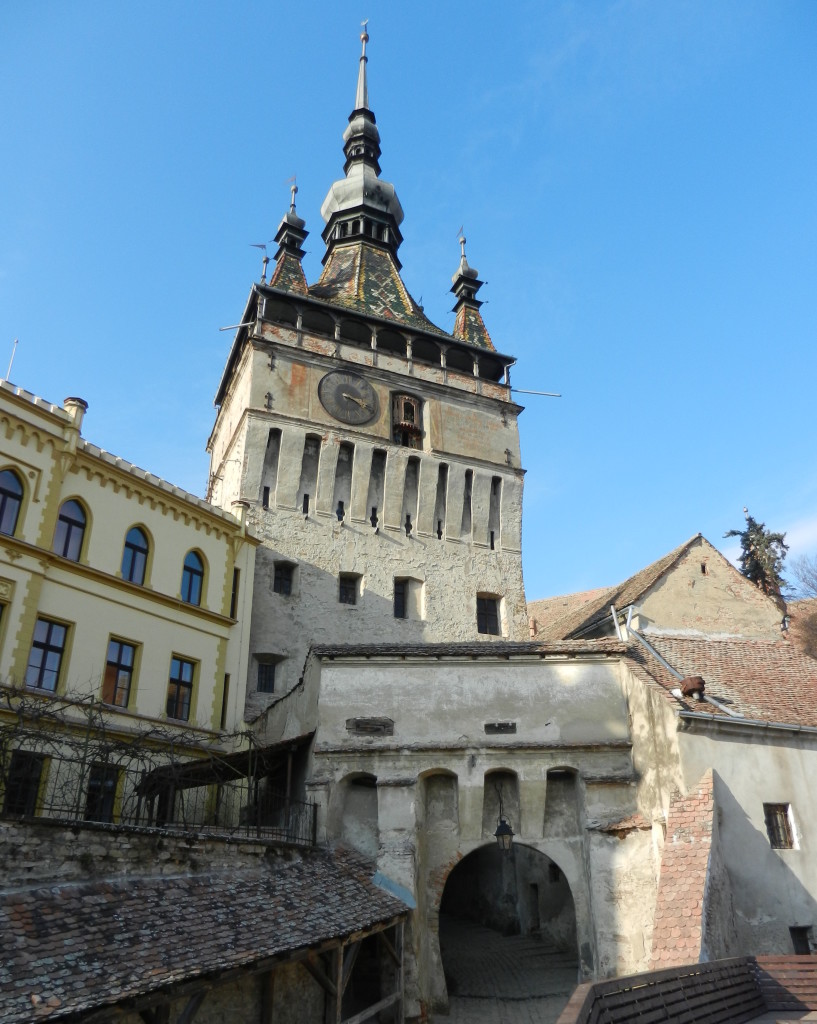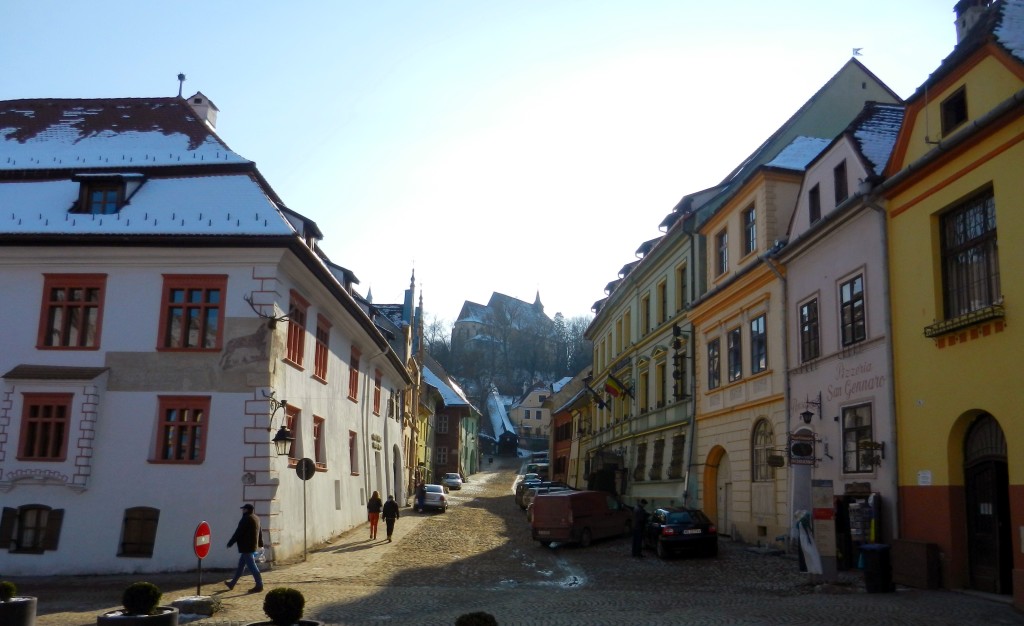Just before leaving our home in Cluj-Napoca, in the spur of the moment, we were convinced to hitch a ride with a friend in the direction of Sighișoara: a brightly coloured citadel overrun with medieval architecture.
Like something out of a German fairy tale, the Transylvanian-Saxon village of Sighișoara rests on top of a steep plateau, wrapped in ancient fortifications, and furrowed with twisting, cobblestone passageways. This UNESCO-claimed heritage site, founded in the 13th century, is among the best preserved medieval towns in Europe.
After a great struggle up the steep hillside with our obese hiking packs, we passed through one of the Sighișoara’s mighty gatehouses and couldn’t help but marvel at the pastel painted, mismatched houses in the sunshine. We found Hostel Burg to stay for the night right in the centre of town– a renovated, wooden-shingled home built in the 14th century. Once inside I often had to duck to avoid hitting my head on the criss-crossing beams. After unloading our packs and collapsing on the bed for a few minutes, we set out to spend the rest of the day exploring the medieval charms of Sighișoara.
 Amongst several hundred other towns, Sighișoara was built by Saxon immigrants who settled in Transylvania from the 12th century onwards. The Hungarian sovereigns of the time ordered the Saxons to colonize Transylvania, primarily to defend the Carpathian border against invaders from the east. The remnants of Saxon architecture and fortifications still stand, in remarkable condition, throughout touristic cities like Sibiu, Brasov, and Sighișoara.
Amongst several hundred other towns, Sighișoara was built by Saxon immigrants who settled in Transylvania from the 12th century onwards. The Hungarian sovereigns of the time ordered the Saxons to colonize Transylvania, primarily to defend the Carpathian border against invaders from the east. The remnants of Saxon architecture and fortifications still stand, in remarkable condition, throughout touristic cities like Sibiu, Brasov, and Sighișoara.
One of the first attractions you’ll find when entering Sighișoara is the Clock Tower. Once guarding the main gateway into the city, the Clock Tower now stands out as Sighișoara’s major landmark and provides an excellent, bird’s eye view into the town below. The tower’s old, wooden clock contains moving, mechanical figurines of angels, gods, and a drummer representing different days of the week. The multi-coloured tiles that adorn the roof of the Clock Tower and its five, sharp spires are hard to miss, even among countless other fascinating structures in Sighișoara.
The infamous Romanian Vlad Dracula can put you on the tourist map faster than you can say “I VANT TO SUCK YOUR BLUD!”. Unlike Bran Castle near Brasov, which uses Dracula as a tourist magnet without any justification, Sighișoara actually has a claim to the fame of Vlad the Impaler. Vlad’s father, Vlad II, lived in Sighișoara and it is POSSIBLE that Vlad the Impaler was born there as well. This, however, is all the proof one needs to start manufacturing Dracula mugs, create Dracula-themed restaurants, and set up a bust of Vlad Tepes in the main square of town.
One scenic hike we did was up to the Church on the Hill. Founded in 1345, this Gothic structure stands upon the highest hill in the centre of the city, dominating Sighișoara’s old town. The Church on the Hill can be reached either by climbing 175 steps up the covered Scholar’s Stairs, or by following the road which winds up the slope along the old town wall. We enjoyed the scenic route following the wall, admiring the magnificent guard towers, and experiencing a lofty view of Sighișoara as we climbed upwards. As churches go, the Church on the Hill wasn’t particularly impressive with it’s 15th-century frescoes having been painted over, but the hike to the highest point of Sighișoara was worth it.
The ancient, Transylvanian citadel of Sighișoara, with its brightly coloured crayon box of buildings, nine towers, and connections to Vlad Dracula himself, is a historical monument you wouldn’t want to miss. The mysterious land of Transylvania is abounding with beautiful, Saxon villages, castles, and fortified churches just waiting to be explored!










